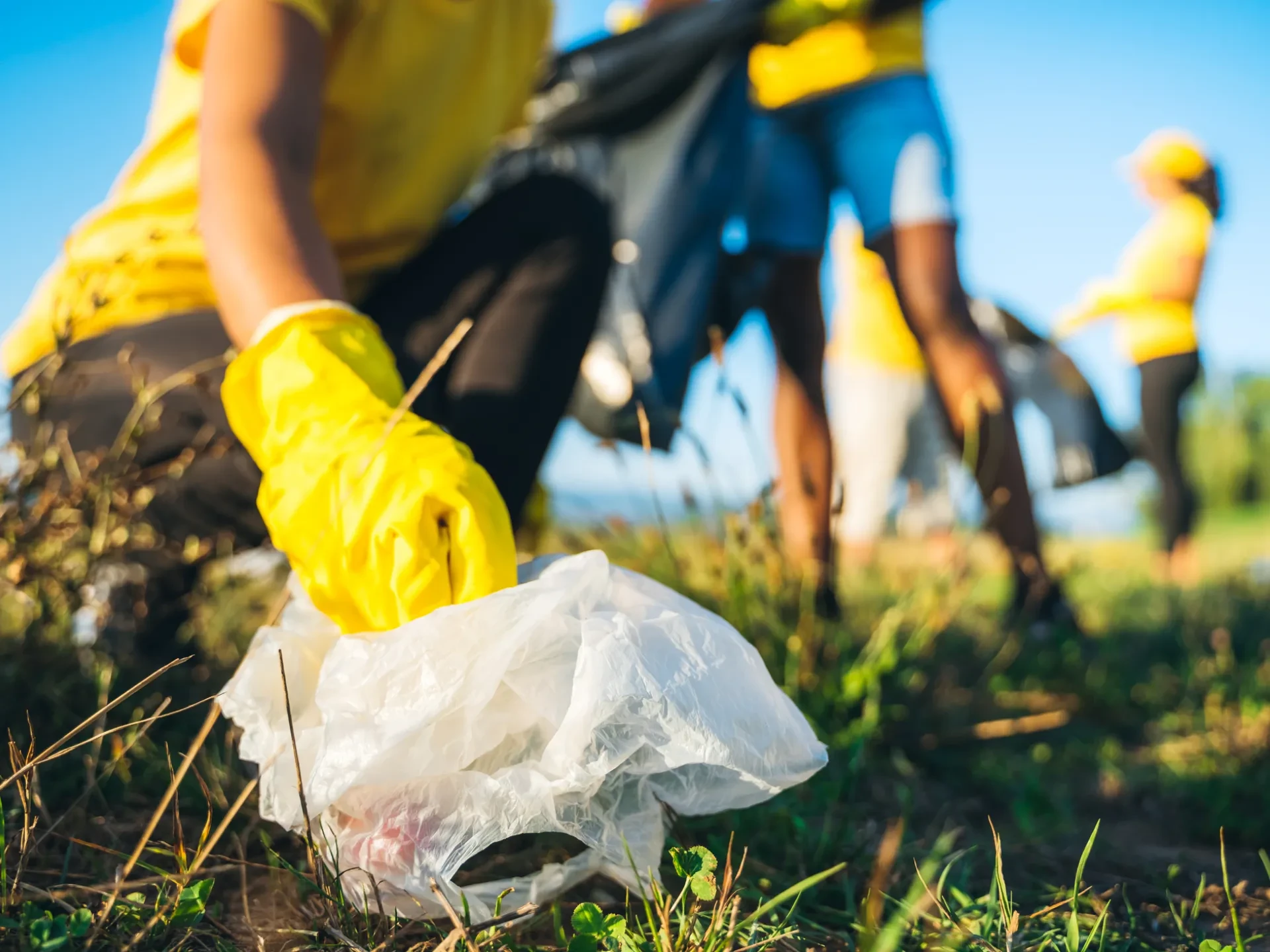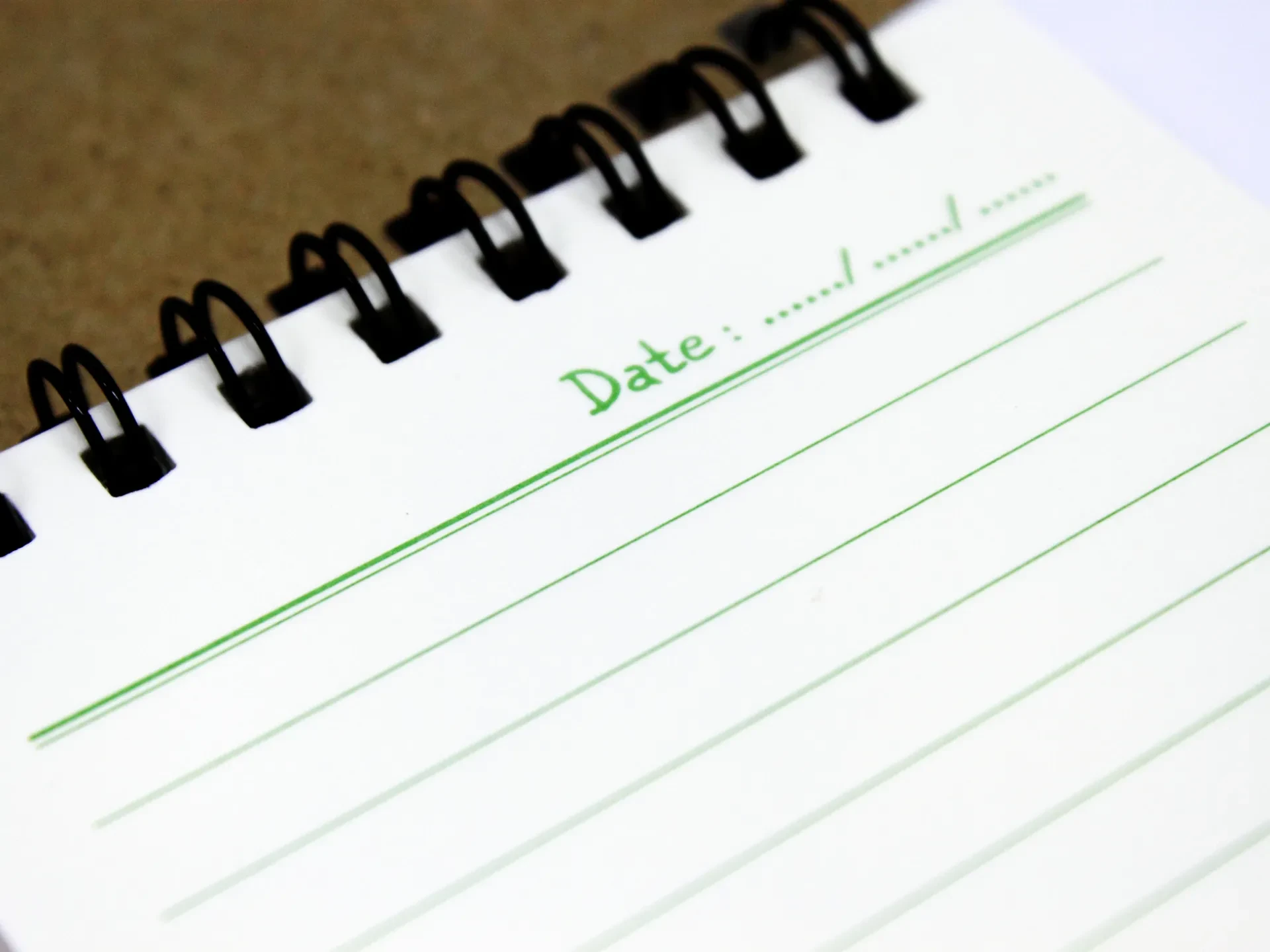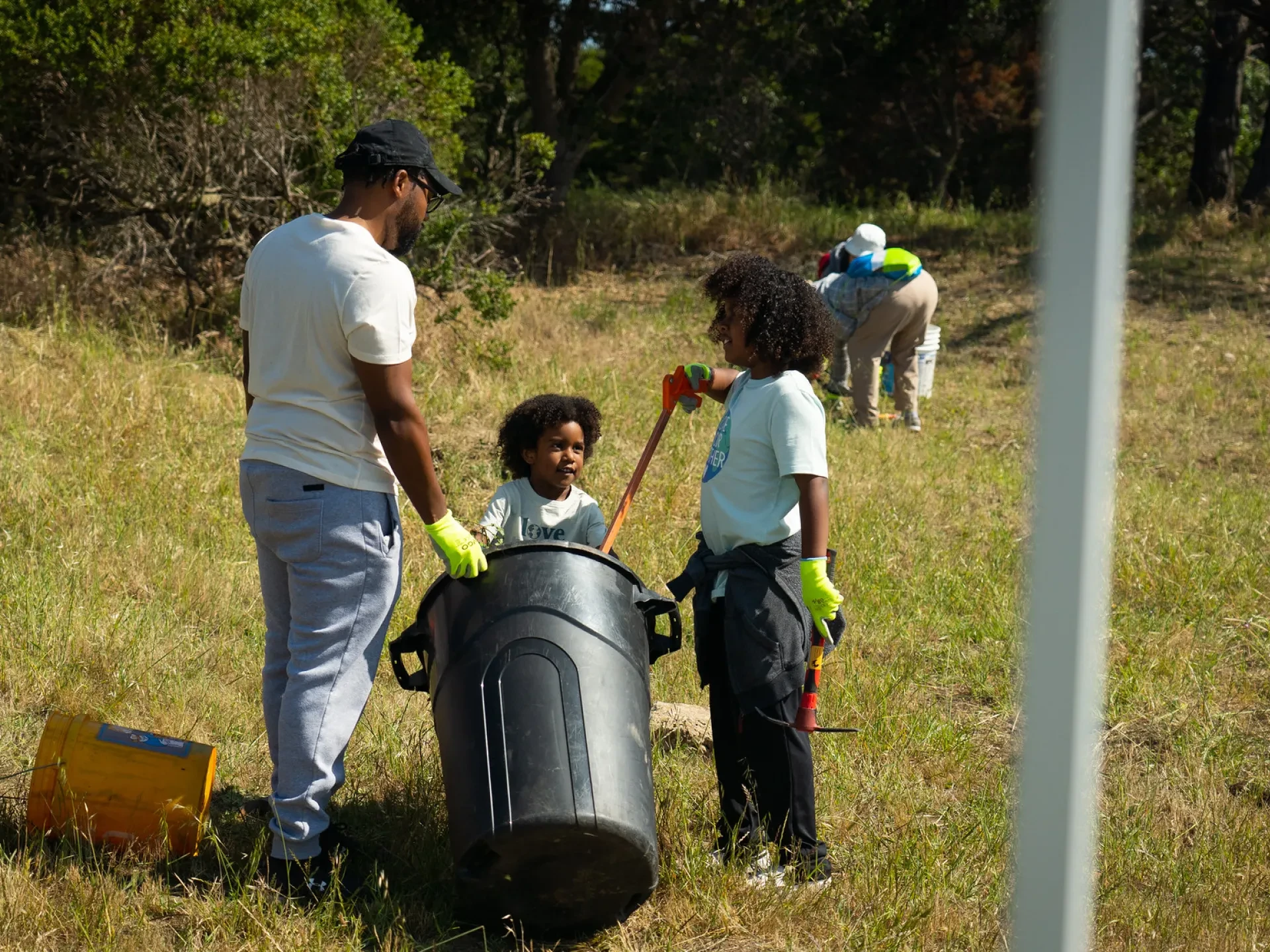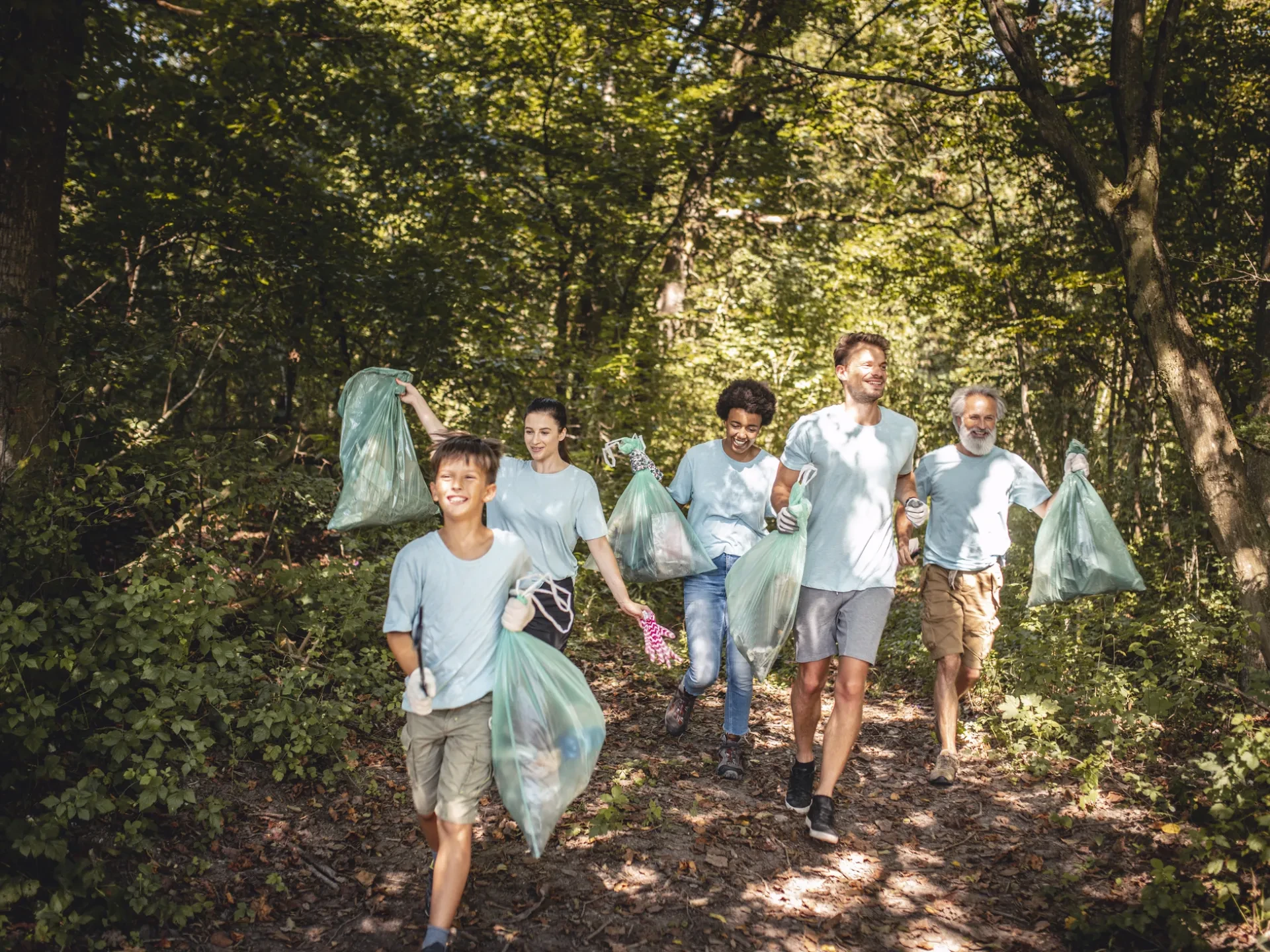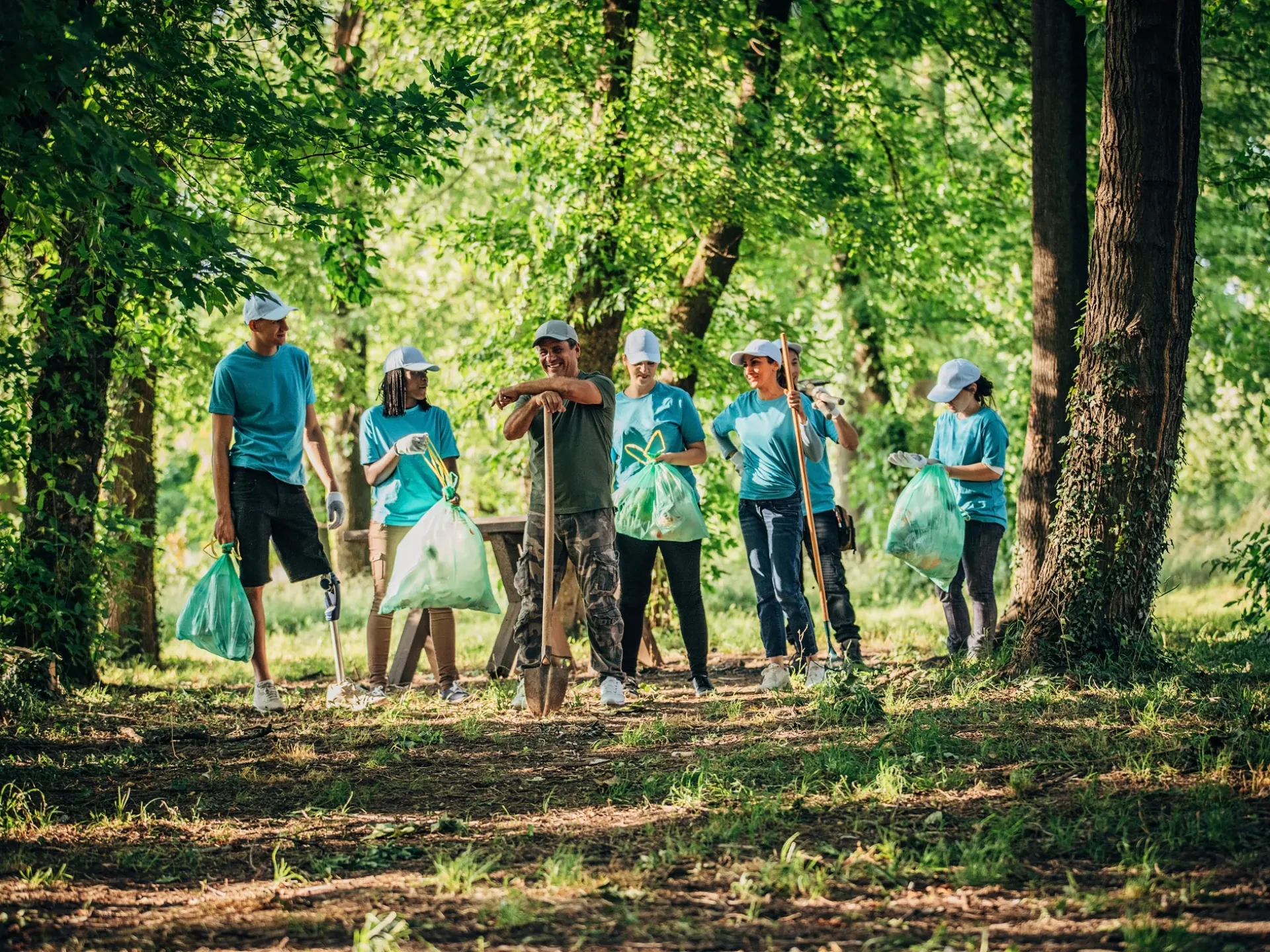Protecting our planet can start right outside your doors. With Earth Day, the largest secular day of action in the world, on the horizon, there's no better time to host your own DIY cleanup event!
Cleanups are a fun and easy way to create a positive impact in your neighborhood. Litter and plastic pollution harm ecosystems by introducing toxic chemicals, disrupting natural waterways, and breaking into tiny pieces easily consumed by animals. By hosting or participating in a cleanup, small efforts lead to collective actions that make powerful movements to protect and preserve our shared home and state parks.
This year, we will teach you how to be environmental stewards in your neighborhoods to celebrate this day of global change. We hope you will take the time to make an impact in your neighborhood!
BEFORE YOUR CLEANUP
In this step: choosing an ideal site, date, and time; collecting supplies; arranging for disposal; and gathering volunteers.
Choose an ideal site, date, and time
-
Choose a public location, a state park, river trail, or local area that would benefit from a cleanup. Getting to your site should be clear and accessible; be sure to check for park closures before arriving. Remember, many natural areas have limitations on the number of people for an organized event, so be sure to check for any necessary local permissions.
-
Select a date and time. While Earth Day is on April 22nd, a cleanup event can be done anytime! Be sure to choose a time with plenty of daylight and comfortable temperatures for volunteers. Most cleanups happen between 9:00 and 11:00 am.
Collect your supplies
-
Checklist: Trash bags, gloves, hand sanitizer, litter grabbers, first-aid kit, sunscreen and bug spray, water bottle, snacks, appropriate clothing, closed-toe shoes, camera, and smartphone.
-
Asking for trash bags, refreshments, and equipment donations is a great way to keep your cleanup well-supplied and costs low. Many local hardware stores are often eager to donate these resources.
Arrange for disposal
-
Each local government in the United States sets its own rules for what is recyclable and compostable. Be sure to coordinate with the local municipality's waste department via a phone call or by checking online to ensure you are disposing properly.
-
For more resources, Earth911 provides a location-based recycling search tool, and the EPA also has a guide for how to recycle common items.
Gather volunteers
-
Cleanups are always more fun with a pal. Plus, you'll be doubling your trash pick-up! A quick message to a few friends, family members, or coworkers at least a week before the cleanup day and a follow-up message the day before can help increase your cleanup's impact.
-
If you want to take it further, investigate ways to advertise your event through your workplace, local community centers, school networks, social media like Facebook neighborhood groups, or sites like NextDoor!
-
Want to be a DIY cleanup superstar? You can also register your cleanup with the Great Global Cleanup, a worldwide campaign to keep our planet litter-free, so that your event appears on the Great Global Cleanup Map, connected to their global network of volunteers. This will help gather volunteers and contribute to the Great Global Cleanup database.
DURING YOUR CLEANUP
In this step: Staying safe, making the event fun, documenting your progress, disposing of waste.
Stay Safe
-
Safety is essential when hosting an outdoor event. One of the best tools to have on hand is a first-aid kit in case of an emergency.
-
Use the buddy system when splitting up! Creating teams of two or more people can help keep the event well-monitored and people accounted for.
-
Appropriate clothing, such as a breathable long-sleeve shirt, pants, sturdy closed-toe shoes, and gloves, can help protect yourself from hazards (such as sharp objects, ticks, and poison oak).
-
Always wear your gloves, look before you grab trash, and pay attention to sharp or unknown objects. Place sharp objects like glass shards in a solid container before disposing. Remember to leave hazardous materials such as needles (especially syringes) and dead animals to experts. Here is a guide for disposing of syringes. Please contact your local City or County Animal Control Services if you encounter a wildlife carcass on public lands.
-
Respect wildlife by keeping your distance.
-
Keeping your body well-fueled is key! Remember to bring a full, reusable water bottle and some snacks.
Make it fun
-
There are plenty of ways to make the cleanup event fun and interactive for volunteers! One idea is to break into teams and add a competitive element, such as incentivizing teams who collect the most trash, the most unusual trash, or by completing a "trash bingo" card featuring typical waste found along the way.
-
Education can play a big role in connecting volunteers to their work. Teaching volunteers about the local wildlife, ecosystem, and how this cleanup contributes to the climate resilience of the area can establish strong connections between the volunteers and the land they are helping to steward. Apps such as iNaturalist can be an incredible tool in identifying the local plants and wildlife encountered during your cleanup. Look at our list of resources with helpful educational opportunities below!
-
Snacks, music, and a thank you hangout is a great way to foster a sense of community and thank all your volunteers for participating! Ideas can include creating a cleanup playlist together (if your area allows for public display of music), a snack potluck to reward your hard work, or visiting a local spot or picnic after to celebrate the successes of the event!
Document your progress
-
Documenting your event can be a great way to help spread awareness about the importance of a cleanup event. It also creates an excellent opportunity to share the work and inspire future stewards.
-
Consider taking before and after photos of the site, action shots of volunteers in the field, and a group shot with all the trash you've collected!
Dispose of waste
-
As you're concluding your event, it's crucial to take on the responsibility of sorting your waste into trash, recyclables, and hazardous waste. Once you've completed this task, transport it to the designated location or service for proper disposal (leave no trace!). Remember to keep track of the amount of waste you've collected, either by the number of bags or its weight.
AFTER YOUR CLEANUP
In this step: Sharing your results and hosting another event!
Share your results
-
Sharing your results is a great way to inspire others to join or host their DIY cleanup. It is also an excellent opportunity to thank your volunteers and those who have helped donate to the cause.
-
Social media is a great tool to showcase your achievements! Be sure to share your DIY cleanup results with California State Parks Foundation through our social media @calparks on Instagram, Facebook, and X, and by using the hashtag #CalParksEarthDay.
Host another one!
-
Now that you are a pro at hosting your DIY Earth Day cleanup event, keep the ball rolling and host another one! Public spaces and parks need help all year round to stay clean. Making every day Earth Day is not only a great way to create a community of land stewards but will also have a tremendous positive impact on the health of our planet.
Congratulations! You now have all the tools to host your DIY Earth Day cleanup! Cleanups like this help stop litter from entering the environment. They also introduce volunteers to the scale of the problem, allowing them to get interested and involved in further climate resilience work. We hope you will use these lessons to gather future land stewards for the collective good of our planet. Happy Earth Day!
